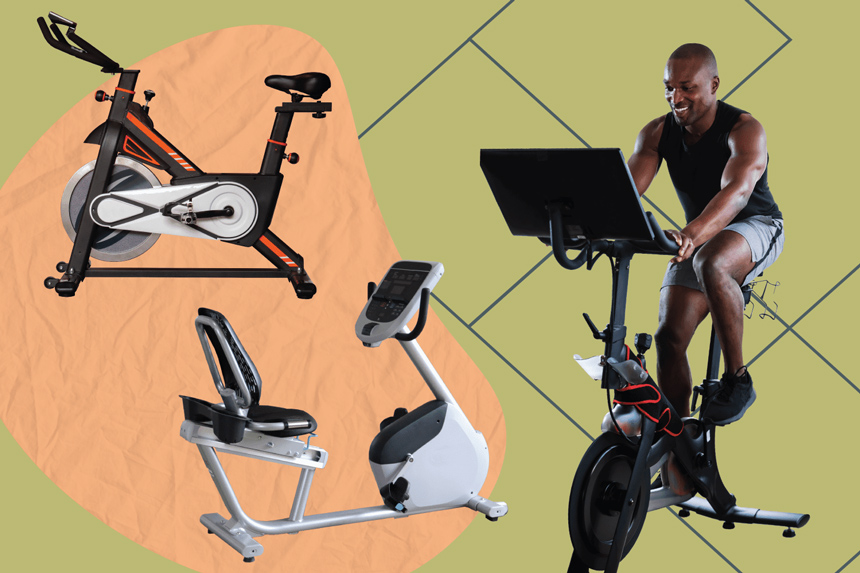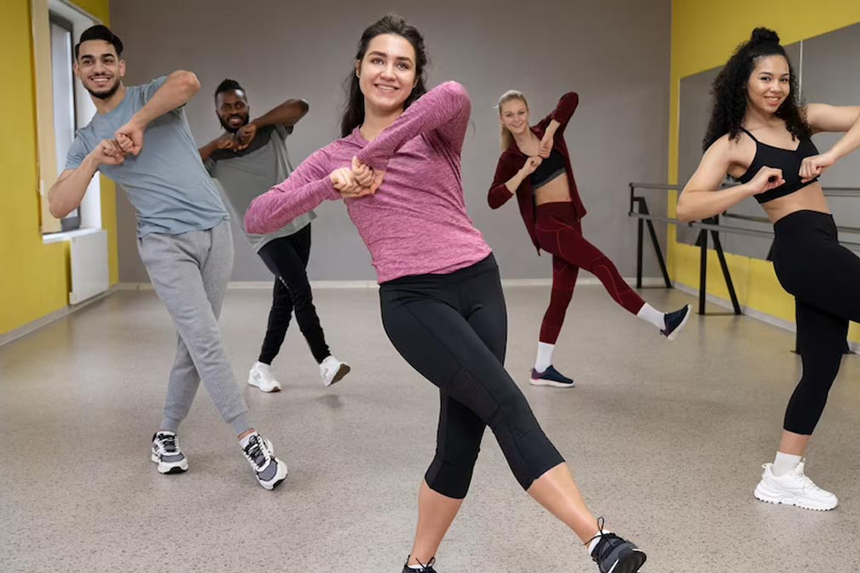Treadmill

Target Muscle Groups: Lower body – quadriceps, hamstrings, calves, and cardiovascular system.
Starting Position and Steps: Simply step onto the treadmill and engage in brisk walking, jogging, or running according to your intensity preferences. The treadmill offers a user-friendly approach to boosting aerobic capacity and heart rate for improved cardiovascular health.
The treadmill remains a classic and accessible cardio machine suitable for various fitness levels. Its simplicity allows users to walk, jog, or run, making it an effective tool for enhancing cardiovascular endurance.
Exercise Bike

Target Muscle Groups: Lower body – quadriceps, hamstrings, calves, and cardiovascular system.
Starting Position and Steps: Sit on the bike with feet on the pedals and hands on the handles. Initiate a circular leg motion to pedal smoothly, adjusting resistance for increased challenge. The exercise bike replicates cycling benefits, effectively engaging lower body muscles and promoting cardiovascular health.
The exercise (or stationary) bike is an accessible alternative to outdoor cycling, providing similar cardiovascular benefits. Its adjustable resistance allows you to tailor workouts to your fitness levels and goals.
Dancing

Target Muscle Groups: Full body engagement, emphasizing the cardiovascular system.
Starting Position and Steps: Simply put on music and move rhythmically to elevate your heart rate and engage in a full-body workout. There are no strict rules; dance freely to the tune of choice, promoting cardiovascular health through enjoyable movement.
Dancing is an enjoyable and effective form of cardiovascular exercise, engaging the entire body while promoting heart health through rhythmic movement to music. The flexibility and freedom it offers make dancing an accessible choice for enhancing cardiovascular endurance.
Reference:
[1] https://ojs.upsi.edu.my/index.php/JSSPJ/article/download/955/656
[2] https://royalsocietypublishing.org/doi/abs/10.1098/rspa.2011.0389
[3] http://archivosdemedicinadeldeporte.com/articulos/upload/or05_bermejo-ingles.pdf
[4] https://www.backfitpro.com/medical-scientific-articles/2012/%5B58%5DMoreside,J.M.(2012)How-do-elliptical-machines-differ-from-walking%5BClin.Biomech.%5D.pdf
[5] https://dl.acm.org/doi/pdf/10.4108/eai.28-9-2015.2261465





